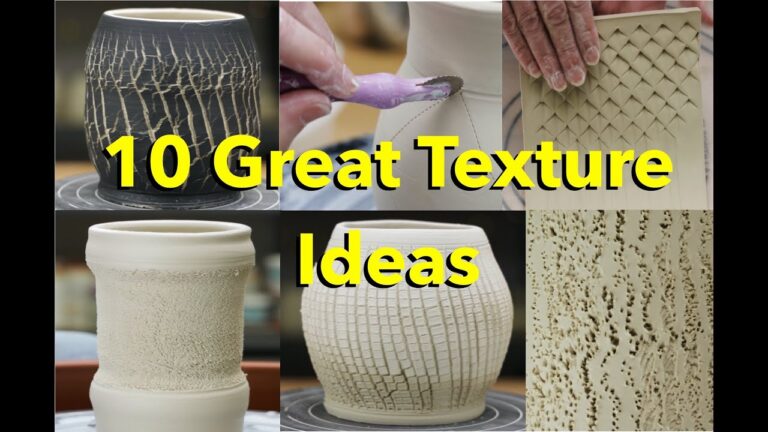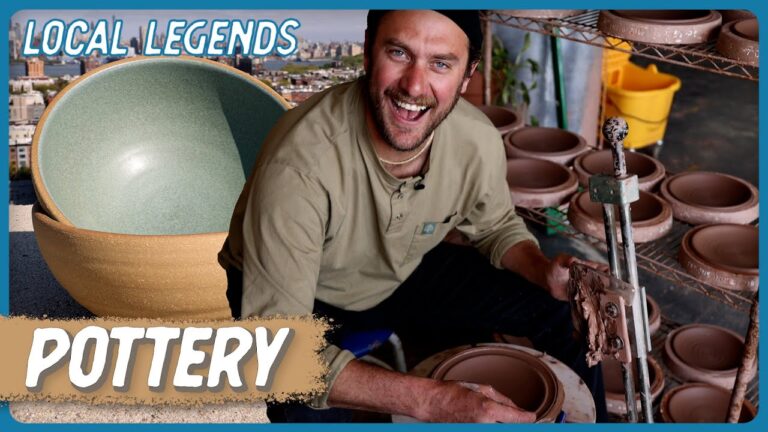Discover the intricate world of ceramic sculpture textures in this captivating article. From smooth finishes to rough textures, each piece tells a unique story through its tactile elements. Explore the artistry and creativity behind these stunning creations as we delve into the world of ceramic sculpture textures.
What do textures in ceramics refer to?
Textures in ceramics refer to the surface quality of the clay, which can be smooth, rough, or have a tactile quality. These textures are created by manipulating the clay in various ways, such as carving, stamping, or using textured tools to create patterns and designs.
One of the most popular methods for creating texture in ceramics is by impressing various objects into the clay. This can range from using pre-designed rollers to imprint patterns, to using natural materials like gravel or leaves to create unique and organic textures. The possibilities are endless when it comes to creating textures in ceramics, and artists often experiment with different techniques to achieve the desired effect.
Overall, textures in ceramics play a crucial role in adding visual interest and depth to the finished piece. Whether it’s a smooth, polished surface or a rough, tactile texture, the choices for creating textures in ceramics are limitless, allowing artists to explore and express their creativity in unique and exciting ways.
What are the elements of ceramic sculpture?
The elements of ceramic sculpture encompass the shape of the object, the intricate decoration techniques such as painting and carving, and the finishing touch of glazing that enhances and protects the artwork. These elements work in harmony to create visually appealing and durable ceramic pieces that showcase the creativity and skill of the artist.
What types of ceramic sculpture exist?
Ceramic sculptures can be categorized into four main types: earthenware, stoneware, porcelain, and bone china. Each type has its own unique characteristics and qualities that make them distinct from one another. Earthenware is known for its porous and rustic appearance, while stoneware is durable and versatile. Porcelain is delicate and translucent, while bone china is known for its strength and fine texture.
Earthenware sculptures are typically fired at a lower temperature, resulting in a more porous and rustic finish. Stoneware sculptures are fired at a higher temperature, making them durable and suitable for functional pieces. Porcelain sculptures are known for their delicate appearance and translucent quality, often used for decorative pieces. Bone china sculptures are made from a combination of bone ash and clay, creating a strong and fine texture that is ideal for both functional and decorative pieces.
In conclusion, the different types of ceramic sculptures offer a diverse range of options for artists and collectors alike. Whether you prefer the rustic charm of earthenware, the durability of stoneware, the delicate beauty of porcelain, or the fine texture of bone china, there is a type of ceramic sculpture to suit every taste and style. Each type brings its own unique qualities to the table, making ceramic sculpture a versatile and dynamic art form.
Mastering the Art of Ceramic Texture
Discover the intricate world of ceramic texture and elevate your craft to new heights. With a focus on mastering the art of manipulating clay to create unique and captivating textures, this guide will help you explore different techniques and tools to achieve stunning results. From hand-building to wheel-throwing, learn how to add depth and dimension to your ceramic pieces, creating tactile surfaces that beg to be touched and admired. Whether you’re a beginner or a seasoned artist, this comprehensive resource will inspire and empower you to push the boundaries of traditional ceramic work and unlock your creative potential.
Sculpting with Sensory Textures
Immerse yourself in the world of tactile art with our sensory texture sculpting experience. Feel the smooth curves and rough edges as you mold your creation, using your hands to shape and form the perfect masterpiece. Our unique approach to sculpting allows you to engage all of your senses, creating a truly immersive and unforgettable artistic experience.
Discover the power of texture as you explore the endless possibilities of sensory sculpting. From the soft, velvety feel of clay to the gritty resistance of stone, our materials are carefully selected to enhance your tactile experience. With our expert guidance, you’ll learn how to manipulate these textures to bring your vision to life, adding depth and dimension to your artwork. Whether you’re a seasoned sculptor or a first-time creator, our sensory texture sculpting experience is sure to ignite your passion for art.
Unleash your creativity and connect with your inner artist as you delve into the world of sensory texture sculpting. Our hands-on approach allows you to fully immerse yourself in the process, feeling the textures come to life beneath your fingertips. Let the sensory experience inspire your imagination and take your sculpting to new heights, creating unique and captivating works of art that engage both the eyes and the hands.
Unleashing Creativity through Ceramic Surface Design
Unleash your creativity with our ceramic surface design techniques that will add a unique and artistic touch to your creations. Our innovative methods and tools will empower you to explore endless possibilities, from intricate patterns to bold color combinations, allowing you to elevate your pottery to a whole new level. Whether you’re a seasoned ceramic artist or just starting out, our approach will inspire you to experiment and push the boundaries of traditional design, leading to stunning and one-of-a-kind pieces that will captivate and delight.
In the realm of ceramic sculpture, textures play a crucial role in adding depth, character, and visual interest to the artwork. Whether smooth and polished or rough and intricate, each texture contributes to the overall aesthetic and storytelling of the piece. By exploring the endless possibilities of textures in ceramic sculpture, artists can truly elevate their creations to new levels of creativity and craftsmanship. Embracing the tactile and visual qualities of various textures allows for a dynamic and engaging experience for both the artist and the viewer, making each piece a unique and captivating work of art.



